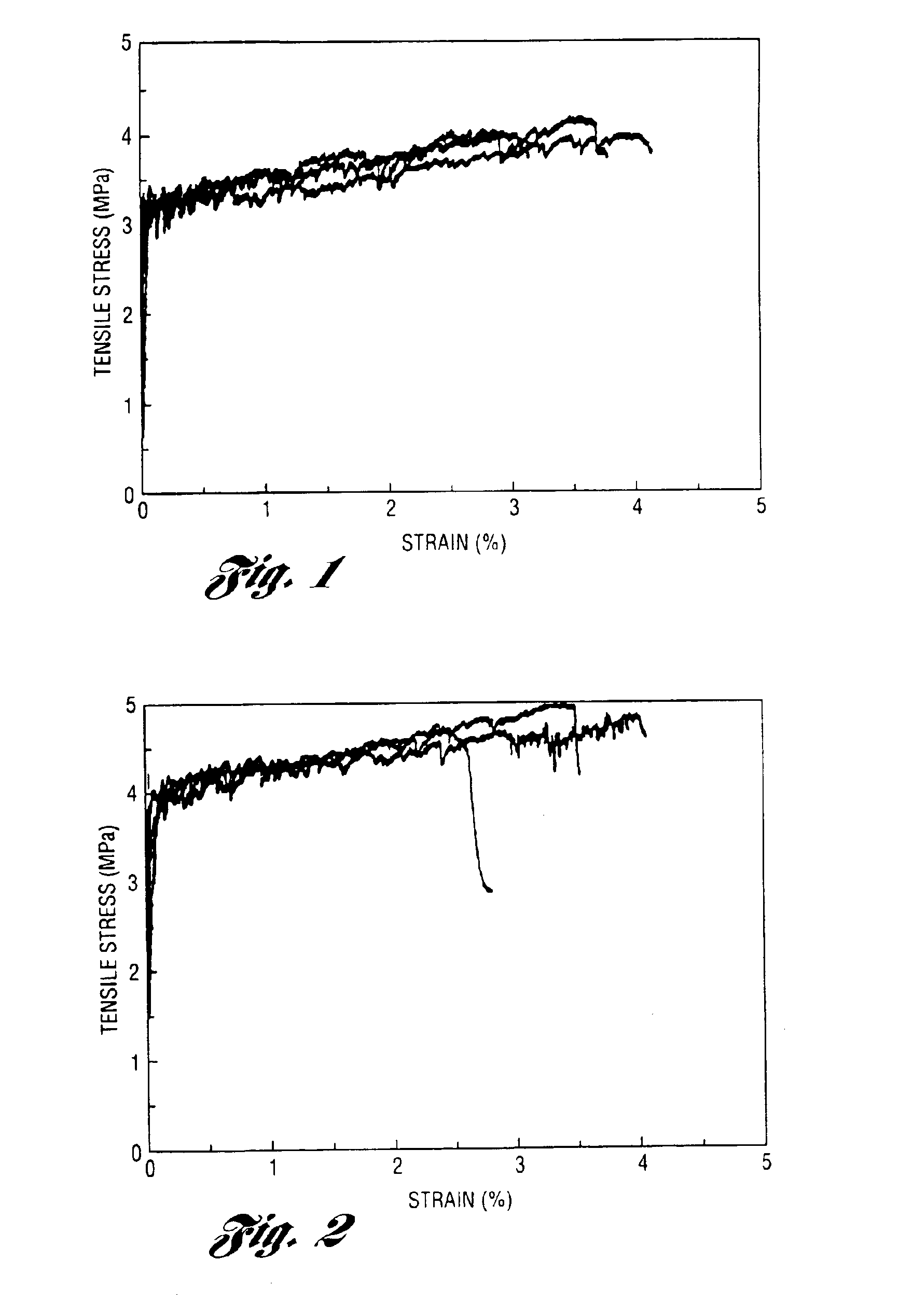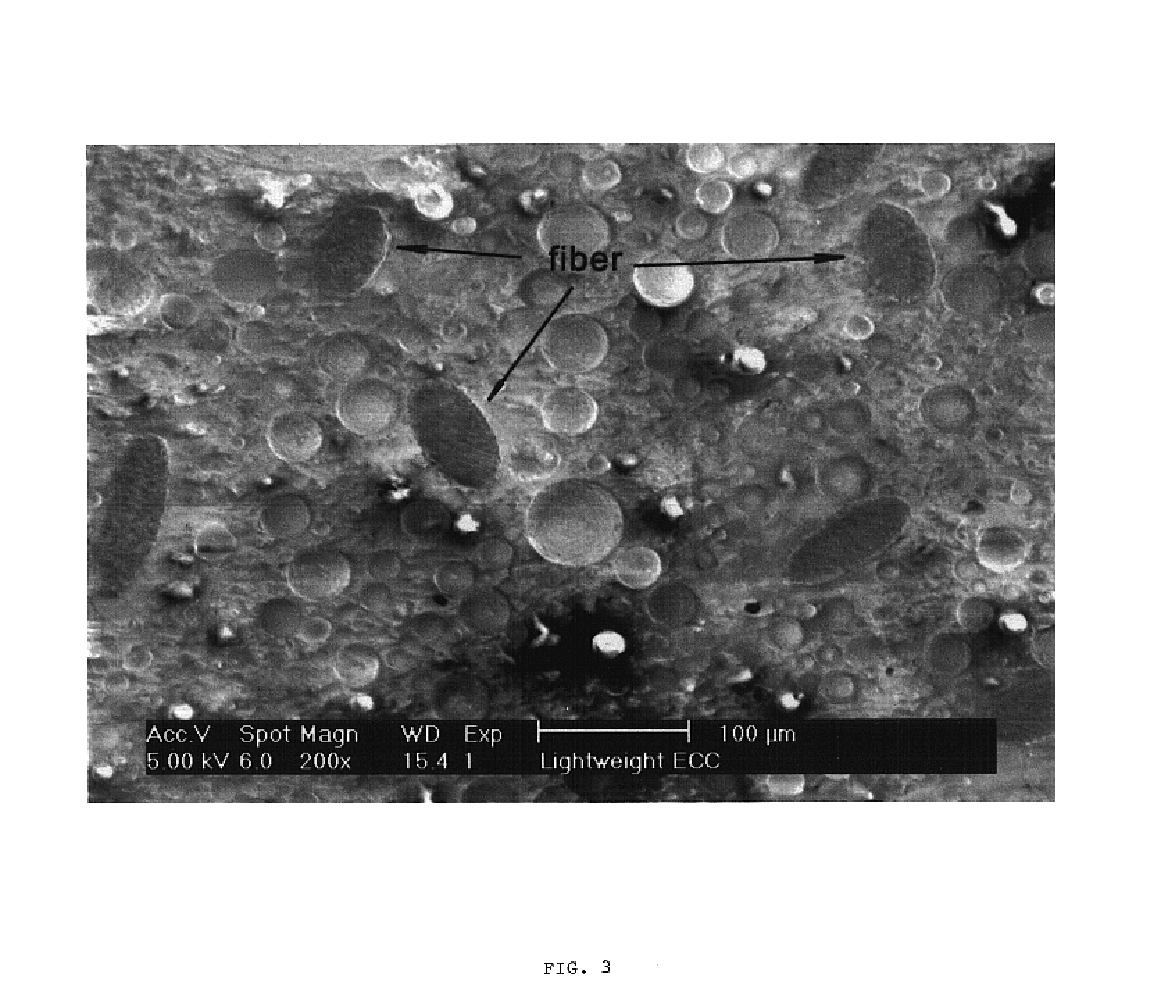Lightweight strain hardening brittle matrix composites
a brittle matrix, lightweight technology, applied in the field of fiber reinforced, brittle matrix inorganic composites, can solve the problems of lightweight concrete being limited, the cracking and brittle nature of concrete is even more pronounced in lightweight concrete, and conventional fiber reinforced concrete still exhibits quasi-brittle post-peak tension softening behavior
- Summary
- Abstract
- Description
- Claims
- Application Information
AI Technical Summary
Benefits of technology
Problems solved by technology
Method used
Image
Examples
examples 1-10
[0040]Exemplary mixes at various densities are prepared to illustrate the invention. The examples contain cement, water, lightweight fillers, sand, viscosity control agent, water reducing agent, and discontinuous short fiber. Mix proportions are tabulated in Table 1, and are in parts by weight with the exception of fiber which is in parts by volume. The cement used is Type I Portland Cement from Lafarge Cement Co., MI, USA. Two types of Scotchlite™ glass bubbles from 3M Co., Minnesota, USA, i.e. S38 and S60, and Micro-hollow-bubble MHK available from Heidelberger Bauchemie Co. Ltd., Leimen, Germany are used as lightweight fillers. Fine sand with a size distribution from 50 to 150 μm, available as F110 from US Silica Co., Berkeley Springs, W. Va., USA, is used in some mixes to improve the modulus of elasticity. The viscosity control agent used is hydroxypropyl methylcellulose (“MC”), available as Methocel™ cellulose ether through Dow Chemical Co., Midland, Mich., USA. The water reduc...
PUM
| Property | Measurement | Unit |
|---|---|---|
| length | aaaaa | aaaaa |
| density | aaaaa | aaaaa |
| mean particle size | aaaaa | aaaaa |
Abstract
Description
Claims
Application Information
 Login to View More
Login to View More - R&D
- Intellectual Property
- Life Sciences
- Materials
- Tech Scout
- Unparalleled Data Quality
- Higher Quality Content
- 60% Fewer Hallucinations
Browse by: Latest US Patents, China's latest patents, Technical Efficacy Thesaurus, Application Domain, Technology Topic, Popular Technical Reports.
© 2025 PatSnap. All rights reserved.Legal|Privacy policy|Modern Slavery Act Transparency Statement|Sitemap|About US| Contact US: help@patsnap.com



